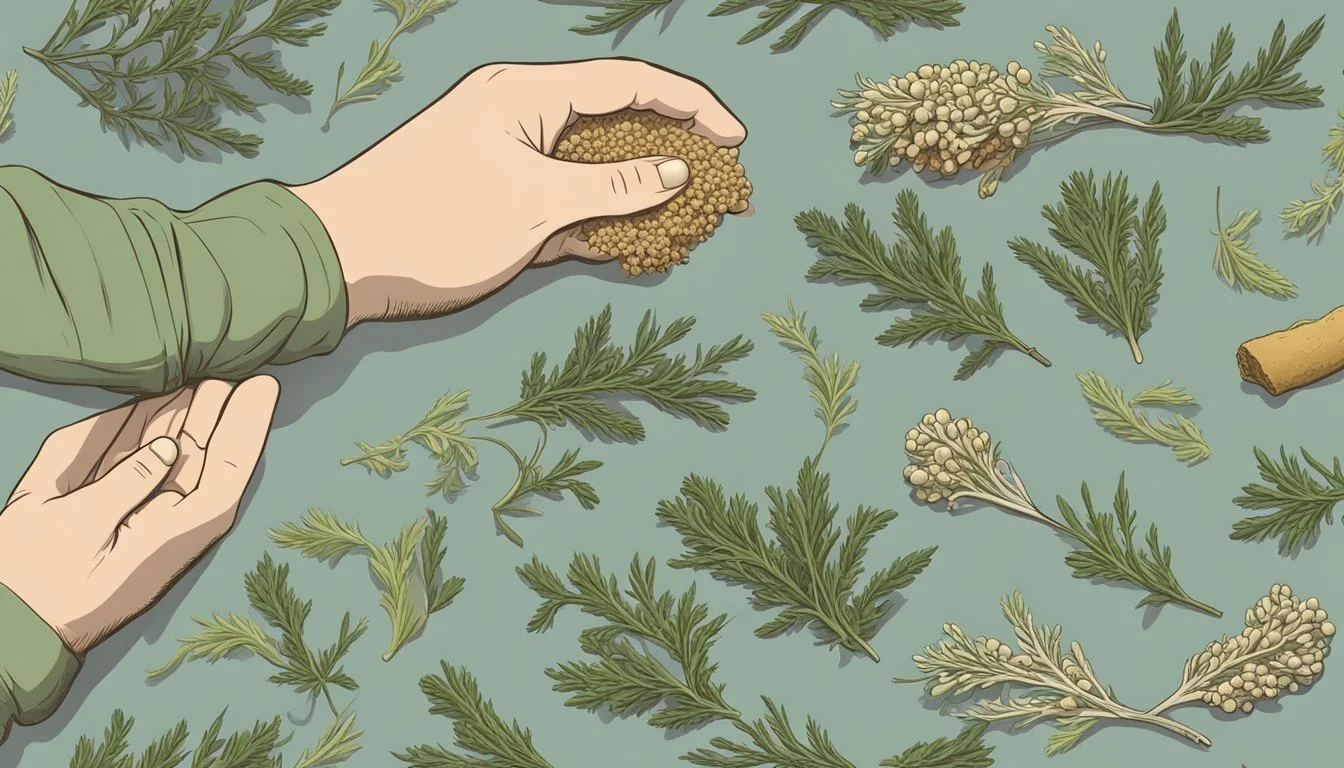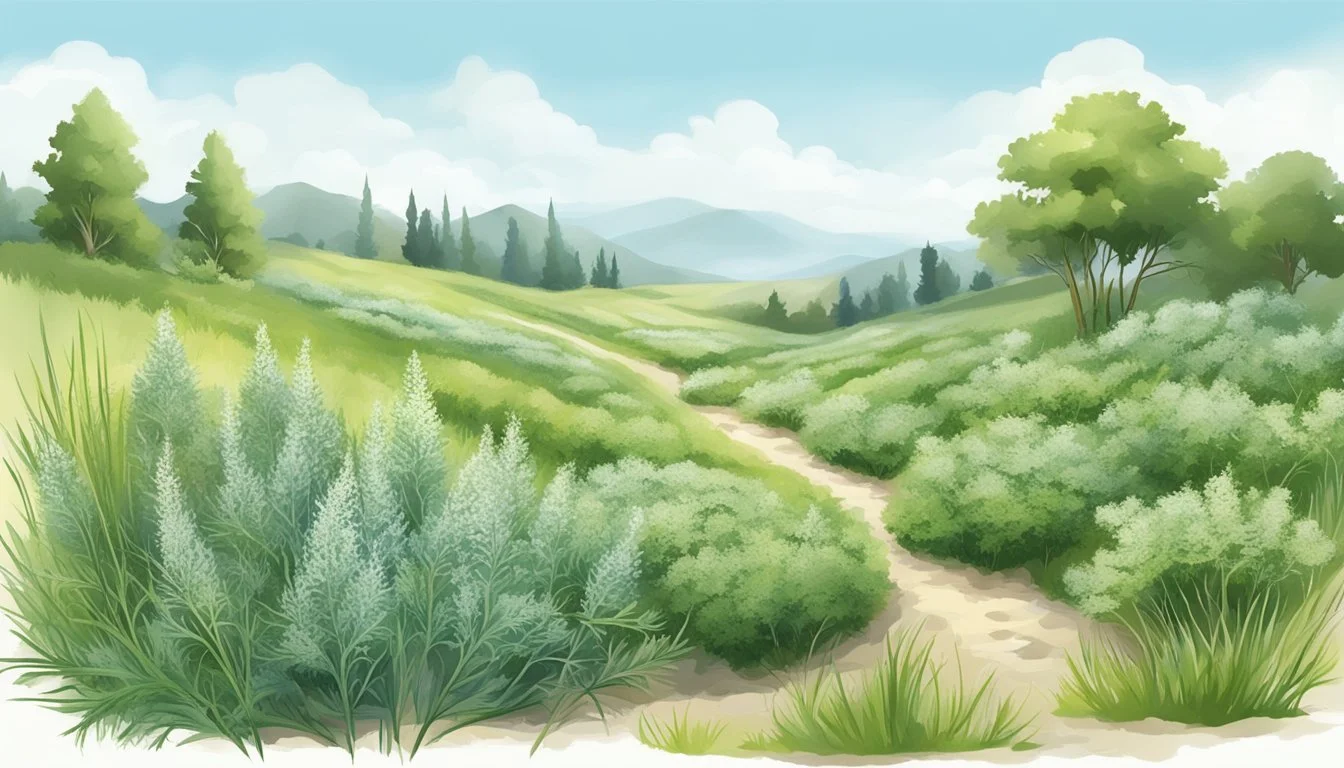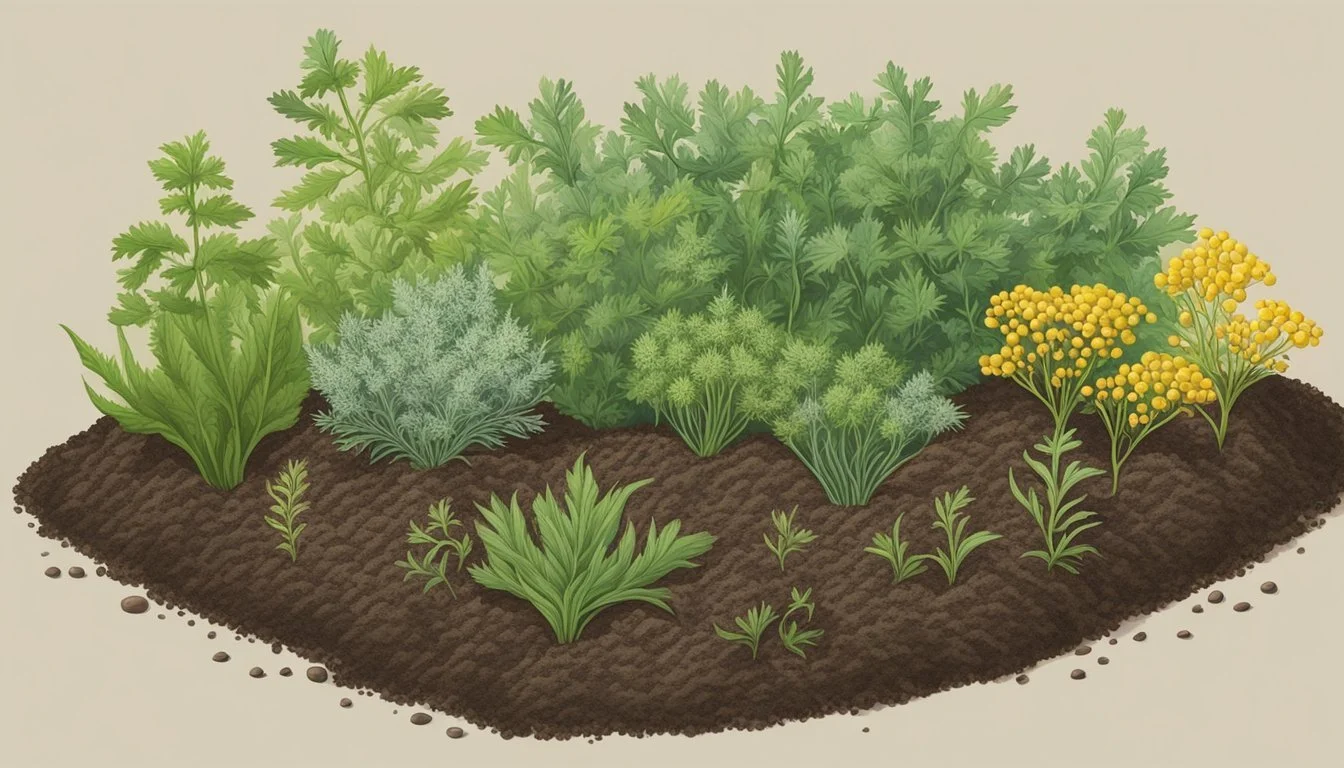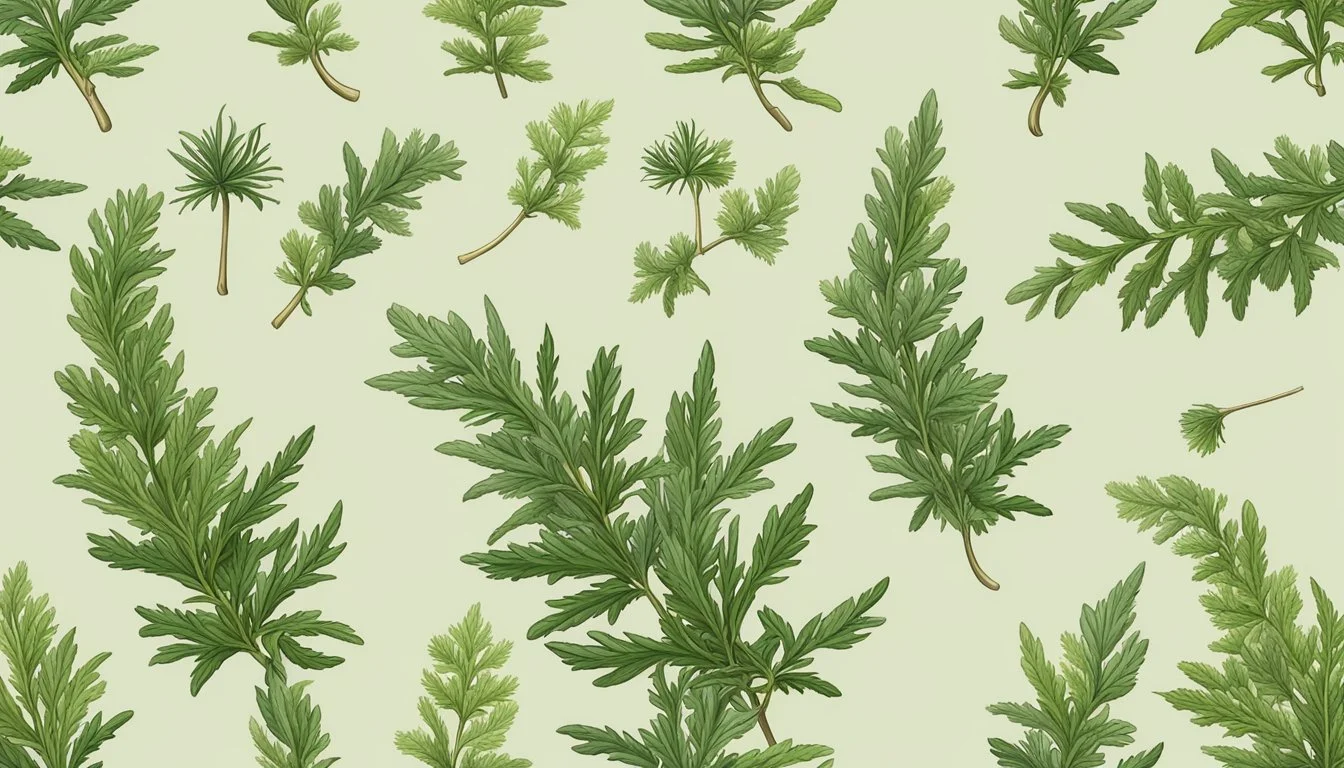Wormwood Seeds Substitutes
Effective Alternatives for Herb Gardens
Exploring alternatives to wormwood seeds opens up numerous possibilities for gardeners and herbal enthusiasts. For those interested in growing plants with similar medicinal or ornamental properties, Artemisia species like tarragon (Artemisia dracunculus) and southernwood (Artemisia abrotanum) serve as excellent substitutes. These plants share wormwood's unique attributes and can be grown in similar soil and climate conditions, providing comparable benefits.
Absinthe enthusiasts might look into other herbs that contribute to the iconic spirit's flavor profile. Gardeners can consider using hyssop or fennel, both of which have historical ties to absinthe production. These plants cater to those who wish to experiment with traditional recipes while maintaining the distinctive aromatic qualities.
In medicinal uses, mugwort (Artemisia vulgaris) stands as a notable alternative. Sharing similar bioactive compounds with wormwood, it is valued in traditional herbal practices for aiding digestion and addressing gastrointestinal issues. Mugwort’s versatility in medicinal applications makes it a worthy replacement in herb gardens dedicated to health and wellness.
Understanding Wormwood
Wormwood (Artemisia absinthium), a perennial herb known for its distinctive silver-green foliage, has various growth requirements. It is important to understand both its botanical profile and the optimal conditions for its cultivation.
Botanical Profile
Wormwood belongs to the Artemisia genus within the Asteraceae family. This perennial herb is noted for its aromatic leaves, which have a silvery hue and a bitter taste. It typically grows to a height of 2-4 feet and produces yellow flowers.
Originating from Europe, wormwood thrives in environments with well-drained soil and can tolerate poor soil conditions. Its appearance, with its feathery leaves and small clusters of flowers, makes it a visually pleasing addition to gardens.
Growth Requirements
To successfully cultivate wormwood, place it in a sunny location with at least 6-8 hours of full sun daily. Wormwood prefers well-drained soil to prevent root rot, although it can tolerate less-than-ideal conditions.
Seed germination requires soil temperatures between 55-65°F. For planting, sow seeds on the soil surface and keep the soil moist until germination, which usually takes 2-9 weeks. Once established, wormwood requires minimal watering, thriving in dry, arid conditions.
For robust growth, thin seedlings to about 18-24 inches apart. While wormwood is not a heavy feeder, an occasional application of a balanced, slow-release fertilizer in the spring can encourage growth. Avoid over-fertilizing as it can lead to leggy growth.
Wormwood Seed Substitutes
When wormwood seeds are not available, several alternatives can be utilized for similar ornamental or medicinal purposes. Understanding the characteristics of these substitutes and their main features can help gardeners and botanists make informed decisions.
Alternative Herbs
Mugwort (Artemisia vulgaris): Mugwort shares many qualities with wormwood, including its aromatic leaves and medicinal uses. This herb is often used for digestive issues and as a flavoring agent due to its bitter profile.
Tarragon (Artemisia dracunculus): Known for its culinary use, tarragon has a distinct aroma and sweet, anise-like flavor. It provides some medicinal benefits such as aiding digestive health and can be a substitute in gardens focusing on aromatic or culinary herbs.
Southernwood (Artemisia abrotanum): Southernwood, like wormwood, is valued for its aromatic foliage. It's used in traditional medicine and as an ornamental plant. Its greenish leaves and yellow flowers add visual appeal similar to that of wormwood.
Similar Plant Characteristics
Bloom and Leaves: Substitutes for wormwood should exhibit similar ornamental qualities. Plants like mugwort and southernwood have greenish leaves and yellow flowers that bloom in a comparable manner, providing similar visual appeal.
Seedlings and Growth: Mugwort and tarragon seedlings can be cultivated in well-drained soil under similar conditions as wormwood, with sufficient sunlight and partial shade. Both exhibit robust growth, making them viable substitutes in gardens.
Aroma and Taste: The bitter taste and strong aroma of wormwood can be mimicked by mugwort and southernwood. These herbs also possess distinct scents that enhance their utility as both medicinal and ornamental plants in a garden setting.
Cultivation Practices
Proper cultivation practices for wormwood include meticulous planting techniques and ongoing care and maintenance. These steps ensure the plant thrives and remains healthy.
Planting Techniques
To plant wormwood seeds, sow them shallowly in well-draining soil. Optimal depth is about 1/8 inch below the soil surface.
Start the seeds in early spring or autumn in flats or directly in the garden. For best results, keep soil temperatures between 55-65°F.
Ensure spacing of 12-18 inches between seeds to allow adequate air circulation. After germination, which typically takes 2-9 weeks, transplant seedlings outdoors after the last frost date.
Care and Maintenance
Wormwood is a drought-tolerant plant, though it requires occasional watering to keep the soil consistently moist, especially during dry periods. Over-watering should be avoided to prevent root rot.
Prune regularly to maintain a compact shape and remove any damaged or diseased parts of the plant. Wormwood prefers full sun and grows best in well-drained soil; lack of proper drainage can lead to diseases.
Being relatively pest-resistant, it generally doesn't suffer from significant pest issues. However, keep an eye out for garden pests and take preventive actions if necessary. Regular feeding is not required, as wormwood thrives in poor soil conditions.
Wormwood as an Herbal Remedy
Wormwood has been appreciated in traditional medicine for its potential healing properties. This section discusses its historical applications and the critical safety considerations associated with its use.
Traditional Uses
Wormwood (Artemisia absinthium) has a rich history as an herbal remedy. Traditionally, it has been used to treat digestive issues, including bloating and loss of appetite. The herb's bitter compounds are believed to stimulate digestion and alleviate discomfort.
Wormwood tea is another common use, famous for its distinct aroma and strong taste. People have also utilized wormwood oil as an antiseptic, leveraging its potential to help protect wounds from becoming infected.
Historically, wormwood is famous for being a key ingredient in absinthe, an alcoholic beverage with a storied past. In various cultures, it has been employed to combat intestinal parasites such as pinworms and roundworms.
Safety and Toxicity
While wormwood possesses various medicinal benefits, safety concerns must be considered. The herb contains thujone, a compound that can be toxic in large amounts. High doses can lead to symptoms like convulsions and hallucinations.
Users should exercise caution with wormwood, especially in the form of concentrated oils or tinctures. Consistent and high consumption can be harmful, so regulated use is crucial.
Wormwood is particularly dangerous for animals. Exposure, especially in dogs, can result in severe toxicity. Individuals should consult healthcare providers before incorporating wormwood into their regimen, particularly if they are pregnant, nursing, or have existing health conditions.
Landscape and Design
Wormwood serves multiple roles in enhancing garden aesthetics and companion planting, making it a versatile substitute in various landscape designs.
Aesthetic Contributions
Wormwood's silvery foliage provides a striking contrast against greenery. The bushy and woody nature of the plant adds texture to garden beds. It can be used as an ornamental filler or border plant, enhancing the visual appeal of any landscape.
The plant emits a distinct fragrance, making it a popular ingredient in potpourri. Wormwood's delicate blooms complement its foliage without overshadowing other plants, making it a subtle yet impactful addition to ornamental gardens.
Companion Planting
Wormwood acts as a natural pesticide, repelling garden pests like aphids and cabbage worms. Planting wormwood near vulnerable plants can reduce the need for chemical treatments.
It thrives in various soil conditions and can improve compost quality through its discarded foliage. However, gardeners should monitor its invasive tendencies and divide the plant regularly to prevent it from overtaking other herbs.
Propagation and Harvest
Propagating wormwood can be achieved through sowing seeds or using division and cutting methods. Each method has its own procedures and requirements, ensuring healthy growth and successful harvesting.
Seed Saving and Sowing
For sowing wormwood seeds, it's vital to use fresh seeds for better germination. Collect seeds when the flowers have faded. Harvesting seeds in late summer ensures mature seeds are collected. Use a sterile seed-starting mix and sprinkle the seeds on the surface. Maintain adequate moisture but avoid over-watering.
Seeds benefit from temperatures around 68°F (20°C). Germination can take anywhere from 2 to 9 weeks. For annuals, sow the seeds a quarter of an inch deep in spring or autumn. For perennials, surface-sow the seeds in autumn. During the germination phase, seed trays should be kept in partial sunlight until seedlings emerge.
Division and Cutting
Wormwood can also be propagated through division and cutting. Division involves splitting the plant, ideally every year or two in midsummer, to prevent it from becoming invasive. This method benefits perennial varieties. Gently separate the root ball and replant each section in well-drained soil.
Cutting is another effective method, usually done in late summer or spring. To propagate through cuttings, take stem cuttings and dust them with rooting hormone. Plant the cuttings in a rooting medium and provide consistent warmth and moisture. This method can expedite the growth process and ensure the plants reach maturity more reliably than seed propagation.
Environmental Impact and Management
Wormwood exhibits significant environmental resilience, with considerable resistance to pests and diseases and adaptability to various climates. It also requires careful management to ensure its sustainability and minimize any negative effects.
Pest and Disease Resistance
Wormwood's robust nature makes it resistant to many pests and diseases. Common pests like aphids and root-knot nematodes rarely affect it significantly. Additionally, wormwood's natural chemical compounds, such as terpenoids, deter many common garden pests.
Root rot may occur if wormwood is planted in poorly drained soil. Therefore, ensuring well-drained soil can mitigate this issue. Although wormwood generally avoids many diseases, monitoring for signs of fungal infections and adjusting soil and watering practices accordingly can enhance plant health.
Wormwood in Different Climates
Wormwood adapts well to a variety of climates. In temperate regions, it can tolerate light frost, and its drought-tolerant nature makes it suitable for areas with lower rainfall. In hot climates, partial shade can help protect against excessive heat.
In nutrient-poor soils, wormwood still thrives, although better growth is observed with minimal fertilization. Different climate zones require specific care adaptations, such as extra mulch in colder regions or increased watering during prolonged dry spells, to maximize its growth and resilience.
Utilization Beyond Gardening
Wormwood, known for its distinct aroma and bitter taste, serves multiple purposes beyond its role in the garden. Its versatility extends to culinary innovations and creative crafts, adding both functionality and aesthetic appeal.
Culinary Applications
Wormwood, particularly its species Artemisia absinthium, is famous for its role in the creation of absinthe, a high-proof herbal liquor. This beverage, renowned for its strong flavor, uses wormwood for its characteristic bitter notes.
Wormwood is also used in small quantities to flavor other spirits, such as vermouth and bitters. The herb's distinct aroma and taste can enhance culinary dishes, though care should be taken due to its potent flavor.
In addition to beverages, the dried leaves of wormwood can be infused in oils, creating unique aromatics for salad dressings and marinades. Certain species like Artemisia dracunculus, commonly known as tarragon, add a peppery finish to dishes, making them a valuable addition to the kitchen repertoire.
Crafts and Decoration
Wormwood's silvery-green foliage and small yellow-green flowers provide aesthetic value in crafts and decoration. Its leaves serve as a natural filler in bouquets and wreaths, adding texture and a touch of elegance.
When dried, wormwood retains its aromatic properties, making it suitable for potpourri mixes. The herb’s enduring aroma and bushy appearance maintain their appeal over time, offering long-lasting decorative benefits.
Wormwood can also be used in the making of sachets for closets and drawers, where its scent not only imparts a pleasant aroma but also acts as a natural moth repellent. Furthermore, the plant's distinct foliage is often utilized in seasonal decorations, bringing a touch of nature indoors.
Choosing the Right Substitute
Selecting an appropriate substitute for wormwood seeds involves considering several key factors such as flavor profile and intended use.
Factors to Consider
When looking for a wormwood seed substitute, flavor is a critical aspect. Wormwood seeds have a distinct, slightly bitter taste often used in medicinal and culinary applications.
Aroma plays a role too, as wormwood seeds impart a characteristic scent that substitutes should ideally match.
Height and growth conditions should also be taken into account, especially if the substitute is intended for ornamental purposes. Wormwood thrives in full sun and has specific soil preferences.
Ornamental and medicinal properties should be evaluated, as many gardeners use wormwood seeds for both their aesthetic and therapeutic benefits.
Considering these attributes ensures the chosen substitute fits well into the intended use, whether in the garden or the kitchen.
Substitute Varieties
For substitutes with a similar flavor and aroma, mugwort (Artemisia vulgaris) and sweet wormwood (Artemisia annua) are excellent choices. These plants share a closely related genus and can often replicate the desired taste and scent.
If the goal is to maintain medicinal properties, southernwood (Artemisia abrotanum) can be a suitable option. It has similar health benefits and is utilized in herbal remedies.
For those seeking a substitute that maintains an ornamental appeal, mugwort is particularly effective. It closely resembles wormwood's growth patterns and visual qualities.
By understanding the properties and applications of these substitutes, one can select the right alternative to wormwood seeds effectively.
Summary Table
Substitute Flavor Aroma Suitable Uses Mugwort (Artemisia vulgaris) Slightly Bitter Characteristic Ornamental, Medicinal, Aromatic Sweet Wormwood (Artemisia annua) Bitter Intense Culinary, Medicinal Southernwood (Artemisia abrotanum) Lightly Bitter Herbal Medicinal, Herbal Teas
This table highlights the key differences and suitable uses for each alternative to help streamline the decision-making process.











